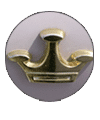Installing Windshield Rubber Gaskets, Door and Trunk Weatherstripping on Vintage Plymouth, Dodge , DeSoto and Chrysler vehicles
Window Glass Removal
First, remove the locking strip or unlock the fixed “self -sealing” tab (if there is one.) Slide a flat knife or putty scraper between the gasket and the glass to “unstick” the rubber from the window. Carefully push the glass towards the locking strip side from the upper corners and center, applying careful even pressure. DON’T push too hard! If the rubber doesn’t begin to give way, go back to step one and use your knife to insure that the rubber is unlocked from the glass IF the rubber is unlocked from the glass it should come out fairly easily. Once you get the glass out pull the old rubber off the pinchweld. DON’T throw it away, especially if your car is a 1953-1954 Chrysler, Plymouth, Dodge or DeSoto…samples may be needed for us to identify the correct replacement!
Andy Bernbaum Auto Parts is going to have just about all the weather stripping and rubber seals you will need to keep your old Plymouth, Dodge, DeSoto or Chrysler tight quiet and dry inside!
Window Glass Installation
First, step is to get the weathers tripping placed on the body, and if you are working with extruded rubber “strip” to trim it for precise fit. Remember make sure the extra channel for the chrome or stainless exterior “reveal” moulding is facing out! Use tape to secure the rubber to the sides and top of the windshield or rear window opening. If the rubber has a lock strip the window will go in through the lock strip side.
Lubricate the glass gore to allow the glass to easily center while installing. Slightly diluted dish detergent works well. Place the glass in the bottom section first.
ON rubbers that contain lockstrip or “seal sealing” attached lock strip this process will be pretty straightforward: press the glass in over the “ridge” and into the channel.
On “old school” rubber with no lockstrip it can be helpful to run a length of string all the way around the inside of the window channel before you press the window in. Some people swear by “weed wacker” line, which can be attained at your local hardware store. The weed wacker “string” is just about the right thickness and strength. The string can be secured into the top and sides of the channel with a tiny drop of adhesive. Crazy glue works well. Push the glass in as far as you can, and then gently pull the string around the perimeter of the window, causing the outside lip of the weatherstip to pop out from under the glass and assume it’s correct position on the exterior of the glass.
Installing Rubber Door Weatherstripping
Use 3m brand black weatherstrip adhesive. Put a VERY thin bead of weatherstrip adhesive on the surface on which the rubber is to be glued. Be sure you know where the weatherstrip is to be positioned, and make sure you get a straight bead of glue! Use a popsicle stick or wooden tongue depressor to spread and flatten that thin bead of adhesive to about the width of the weatherstrip to be installed. While you are allowing the adhesive on the car to get just a little tacky (maybe 3 or 4 minutes) do the same to the flat surface of the weatherstripping. With a thin and “flattened” bead of weatherstrip adhesive on both the rubber and car body you are ready to begin mating the two surfaces.
On early cars (1934-1938) the door rubber does not go around the entire perimeter of the door, only across the top and bottom. One profile on top glues to the BODY. Second profile on BOTTOM of door glues to the door bottom.
Andy Bernbaum Auto Parts also carries fully molded windshield and rear window gaskets for many cars…from the 1930’s right up until the muscle car era of the 1960’s and early 1970’s. Check our shop to see what they we for your car. Start here.






